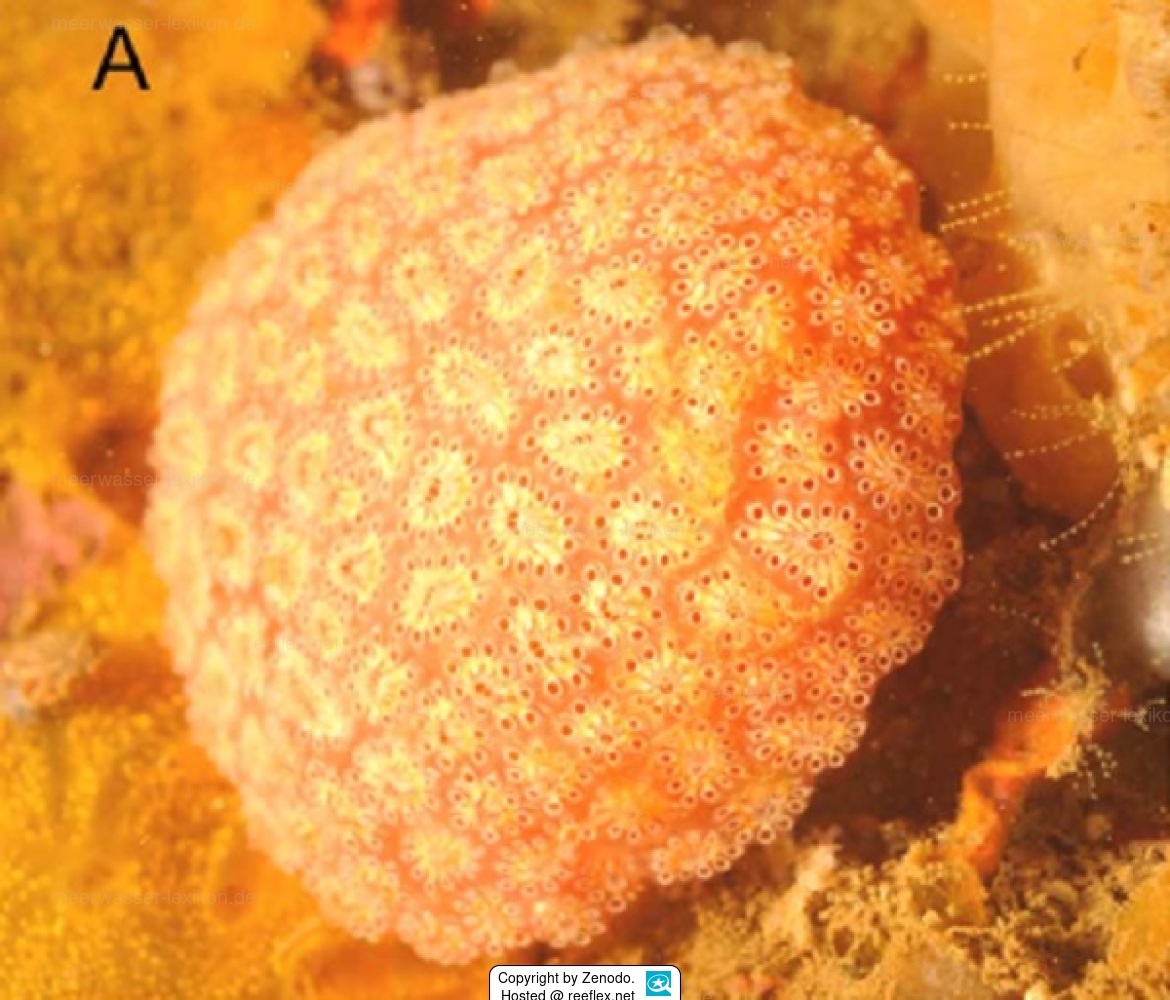Info
Synoicum floriferum is a small-bodied, colonial sea squirt known so far only from the Western Indian Ocean.
The colonies of this sea squirt have the same appearance, they are very gelatinous with a red tunic and transparent zooids arranged in circular systems.
However, the shape varies from flat pads to erect, round lobes that are laterally flattened and have a narrow base. The zooids, up to 15 mm long, are embedded in a mucilaginous layer.
Synoicum floriferum is a hermaphrodite, testis and ovary do not mature at the same time, they are rarely found together in one zooid. The ovary is located some distance from the intestinal loop and, when present, anterior to the testicular vesicles. The testes, arranged in an irregular double row of dense vesicles, occupy the anterior half of the postabdomen.
Naming: The species name "floriferum" is derived from Latin and means "one that bears flowers" (hence the name "flower animals").
The colonies of this sea squirt have the same appearance, they are very gelatinous with a red tunic and transparent zooids arranged in circular systems.
However, the shape varies from flat pads to erect, round lobes that are laterally flattened and have a narrow base. The zooids, up to 15 mm long, are embedded in a mucilaginous layer.
Synoicum floriferum is a hermaphrodite, testis and ovary do not mature at the same time, they are rarely found together in one zooid. The ovary is located some distance from the intestinal loop and, when present, anterior to the testicular vesicles. The testes, arranged in an irregular double row of dense vesicles, occupy the anterior half of the postabdomen.
Naming: The species name "floriferum" is derived from Latin and means "one that bears flowers" (hence the name "flower animals").







 Zenodo
Zenodo




